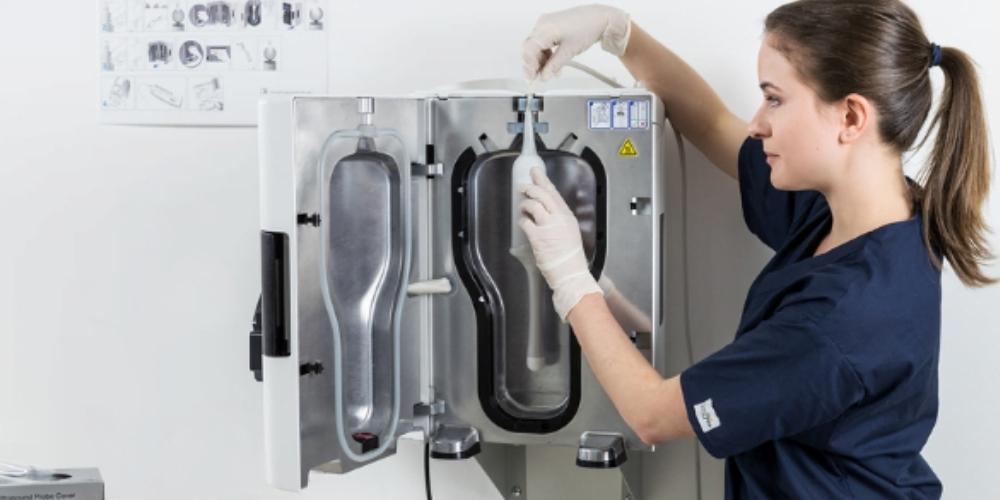Although ultrasound is generally considered to be a safe imaging modality, it is essential for practitioners to adhere to the proper level of disinfection. While low-level disinfection (LLD) may be suitable for many non-invasive ultrasound scans, transducers that have been involved in invasive procedures require a heightened level of infection control. This is where high-level disinfection (HLD) comes into the mix. When ultrasound transducers come into contact with mucous membranes and bodily fluids, such as blood, clinicians must apply HLD.
After cleaning the transducer and removing any fluids or excess gel, HLD is a crucial step to keeping patients safe in ultrasound-guided procedures classified as critical, such ultrasound-guided injections or interventional radiology procedures. The Spaulding classification provides ultrasound practitioners the guidance they need to properly assess the risk level of each procedure and apply the correct disinfection process. The original Spaulding classification consists of three categories: critical, semi-critical, and non-critical (from the highest level of risk to the lowest level of risk, respectively).
However, the European Society of Radiology (ESR) released a modified Spaulding classification which combined the critical and semi-critical classifications. The reasoning behind this was mainly that procedures in both categories pose a significant risk to patient health as they involve entering sterile areas of the body. Thus, the risk of infection remains heightened even in semi-critical procedures. To simplify the disinfection process, the ESR recommends that practitioners exercise the methods recommended for critical procedures in semi-critical ones as well. In this article, we will follow their modified Spaulding classification.
Therefore, the new classifications for risk level are as follows:
Non-critical: non-invasive, contact of US transducer with intact skin only, requiring low level disinfection.
Critical: invasive, such as US-guided punctures or injections, contact of the US transducer with mucous membranes and body fluids or a combination of both
Clinicians have a variety of high-level disinfection methods at their disposal for critical procedures. Depending on the needs of the facility, users can choose from standardized automated validated systems and other HLD methods such as an immersion bath. Approved multistep disinfectant wipes or sprays which are validated for HLD are also an option; however, they are not yet FDA-approved and thus cannot be used in U.S. facilities. HLD immersion baths are a convenient option and allow clinicians to place the ultrasound transducer in a tub of chemicals designed for HLD. Chemicals for HLD include glutaraldehyde 2.4–3.2. percent products, non-glutaraldehyde agents, chlorine dioxide, and hydrogen peroxide 7.5 percent solution. It is important for practitioners to check with the approved list of chemicals provided by the ultrasound manufacturer before applying HLD to ensure that the transducer is not damaged.

In addition, clinicians can also select from standardized automated validated systems. These systems include hydrogen peroxide mist devices and UV light devices. Products such as the Trophon system from Nanosonics provide an easy and compact way for practitioners to perform high-level disinfection on their ultrasound transducers. Moreover, UV light for infection control has seen an increase in use, especially due to the recent pandemic. Some companies have begun developing UV light systems for ultrasound high-level disinfection which would simplify the process.

Overall, correctly performing high-level disinfection on critical ultrasound transducers is necessary for improved patient outcomes. The use of ultrasound in interventional settings requires that practitioners ensure that pathogen colonization does not occur on the transducer. This is only successfully done by following a comprehensive approach to ultrasound infection control that includes cleaning, high-level disinfection, the use of probe covers, and sterile ultrasound gel during critical procedures.









